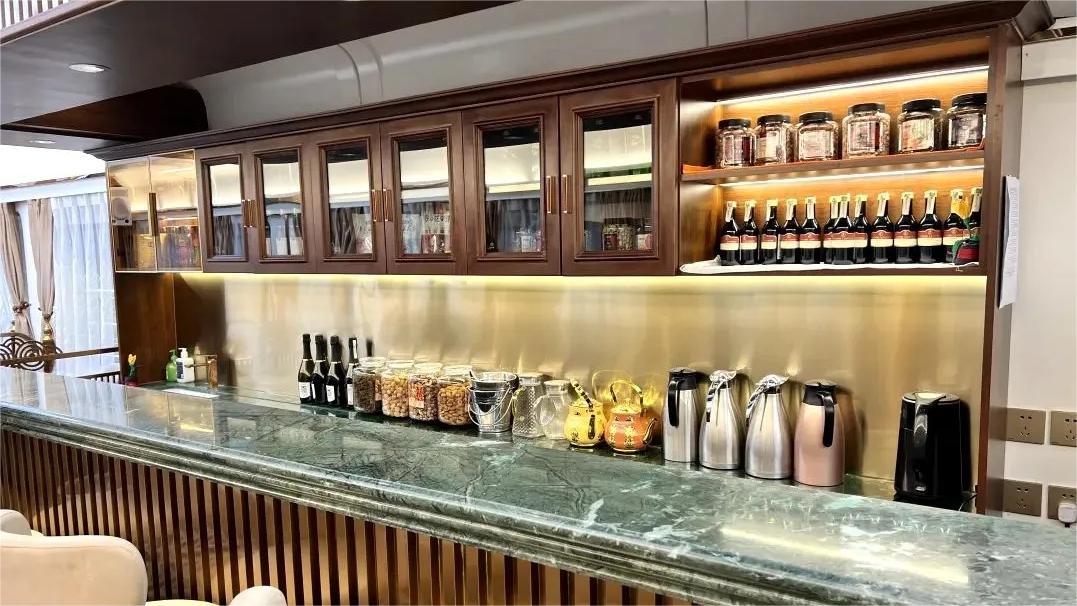Ancient Chinese art form sees modern revival
An ancient Chinese art form, filigree inlaid metal art, has found new life and appreciation in the city of Langfang, north China's Hebei Province.
The intricate craft, one of the eight imperial handicrafts of Beijing, combines two highly skilled techniques - filigree and inlay work.
The filigree process involves manually drawing gold or silver bars into fine threads as thin as hair. These threads are then twisted and shaped into decorative patterns. These delicate threads are woven into intricate designs on ornamental pieces through pinching, filling, welding, and braiding.

Photo shows a filigree inlaid metal art work. (Photo courtesy of the media convergence center of Xianghe county)
The inlay work incorporates various techniques, including hammering, beating, squeezing, and setting, among others. Metal pieces are shaped into bases or cavities, into which gemstones, jades, diamonds, crystals, and beautiful jade pieces are inlaid, ultimately creating an exquisite work of art.
One particularly ornate headpiece crafted using these techniques commands a staggering value of 240,000 yuan ($33,170).
Filigree inlaid metal art was listed as a national intangible cultural heritage in 2008.
Once thriving for centuries in ancient China, this exquisite handicraft nearly disappeared in modern times. Its complexity, high costs, and declining market interest made it difficult for artisans to continue, forcing many to switch careers.

Photo shows a filigree inlaid metal art work. (Photo courtesy of the media convergence center of Xianghe county)
As traditional crafts faced the challenges of industrialization, filigree inlaid metal art experienced a significant decline.
Liu Chao, born in the 1990s and a preserver of this national intangible cultural heritage, witnessed the art's nadir firsthand.
"For years, my family and I traveled across the country, selling our creations at flea markets, jewelry fairs, and antique shops," Liu recalled.
Seeing this cherished craft fade away, he briefly explored other careers. However, the pull to keep his family's three-generation tradition alive was too strong to ignore.
With renewed determination, Liu took over his grandfather's workshop in 2015, dedicating the next decade to bringing this heritage back to life.
Discovering a group of cultural enthusiasts online who were keen to collect traditional Chinese handicrafts, Liu launched an online store in 2018.
This new sales avenue was a tremendous success, leading to a significant increase in domestic sales. Additionally, overseas buyers started to contact Liu directly in Chinese to make purchases, further expanding his reach.
By inheriting traditional techniques, Liu introduced innovation by incorporating "Chinese chic" elements into filigree inlaid metal art. This approach transformed these once-outdated items into fashionable, modern accessories suitable for daily wear.
Today, admirers playfully dub his works as the "Louis Vuitton of accessories for traditional Chinese dress," and his annual sales now exceed 10 million yuan.
"Filigree inlaid metal art requires lifelong learning," Liu said. "More and more young people are coming to me, wanting to join the trade. Knowing that this intangible cultural heritage can continue to be passed down makes all the hardship and toil worthwhile."
Photos
Related Stories
- Art on earth: Teacher draws dragon on ground with fallen leaves
- Trending in China | Leather art
- Paper knife cuttings inheritor in east China's Zhejiang
- Feature: Ethiopian artist's artwork takes inspiration from Chinese classic I Ching
- Exhibition on French modern art opens to media in Shanghai
- Experience Elliott Erwitt's playful perspective on the world
Copyright © 2024 People's Daily Online. All Rights Reserved.









